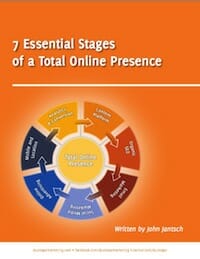I’ve been playing the marketing game for over twenty-five years and the term “integrated marketing” has been around at least that long.

Years ago, however, the concept of integration applied mainly to consistency in branding elements and a unified message in advertising, public relations and sales promotion. With integration a customer or prospect could experience the brand in a similar way and this built a stronger brands – particularly if the advertising message were memorable enough. Think – “Where’s the Beef?” the Wendy’s ad hit.
But then online channels, social behavior and customer voice came along and fragmented even the best attempts at integration.
Suddenly brands had to deal with dozens of new channels and things such as mobile shoppers and consumers armed with the ability to talk back and publish information, images and reviews about brands.
Organizations that were used to tightly controlling their marketing had seemingly lost control and attempts to catch up by putting QR codes on billboards only made the fragmentation worse.
Oddly enough, while many things in marketing have changed, some never really have.
Brands that get integration right understand that it starts with a simple unified strategy that projects and protects a single-minded message and voice. This is something I’ve been calling Clarity.
Clarity goes beyond some of the traditional definitions of marketing strategy as it suggests that an organization understand the one thing above all that they want to be known as and they use that as the filter for everything they do.
In many cases this one thing has no direct correlation to the products and services that a company provides and often rests on things like purpose and community.
Once clarity of strategy is understood it’s simply amplified by making it part of the culture of the organization. Once that’s understood you can go to work on integrating all the moving parts that make up the ways that customers experience a brand.
When Clarity and Culture are tied together as strategy, integration expands to include not only consistent branding elements, advertising messages, sales promotion, public relations but things like human resources, strategic relationships, customer service, and product development.
What this view suggests is the fact that integrated marketing today means that marketing must be integrated into everything the business does.
The view of integration
Once Clarity and Culture are in place you can deliver a truly integrated experience by viewing the many channels a business must manage as the convergence of streams. Rather than simply creating a consistent look, feel and tone you come to view the power of merging channels in support of each other.
- Your advertising builds on your content strategy to drive awareness
- Your SEO and social media efforts support and drive list building and email marketing
- Your PPC campaigns drive conversion testing as well as content creation
- Your mobile outreach supports social channels and drives offline actions
- Your email marketing supports your social media and advertising efforts
- Your public relations supports SEO and content efforts
- Your customer service leans on social channels and content creation
- Your analytics allows you to see the impact of integration instead of simply measuring the last click
The point is that in today’s marketing world the real objective is community building and in that effort integration is an exercise in the power of the convergence of streams built on and amplified through a single-minded strategy rather than then simply an attempt at a consistent set of tag lines and colors.
 I believe the message of integration, particularly as it relates to the many new online channels, is such an important one I’ve written a new digital book called The 7 Essential Stages of Building a Total Online Presence and made it available exclusively on Amazon.com
I believe the message of integration, particularly as it relates to the many new online channels, is such an important one I’ve written a new digital book called The 7 Essential Stages of Building a Total Online Presence and made it available exclusively on Amazon.com
The book not only expands on the theme of integration it outlines the importance of building the stages of content, SEO, email marketing, social media, online advertising, mobile and location and analytics and conversion as one unified form of integrated marketing.
Each stage includes action plans, tools and links to dozens of resources. The digital book is currently on sale for $4.99. If anything about this message resonates you’ll want to spend the five bucks to add to your education and experience in this important area of business.

